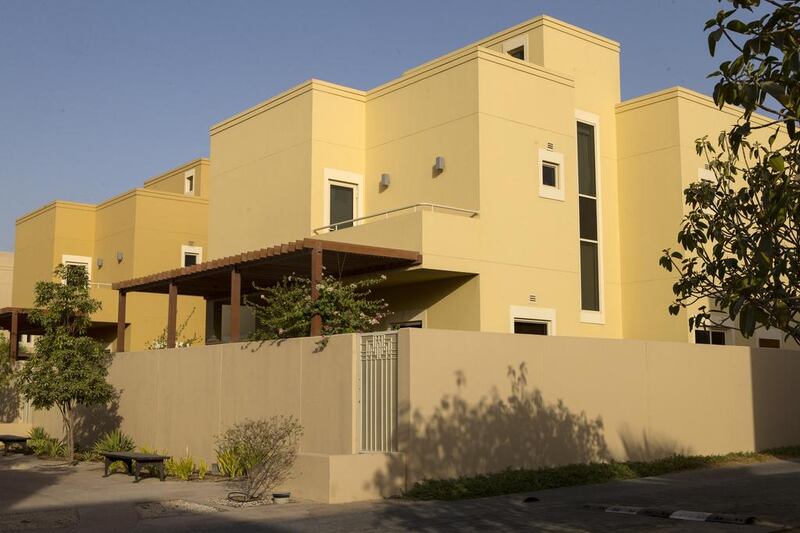Residential sales and rental prices fell in most neighbourhoods across Abu Dhabi in the first six months of 2018, albeit at a slower pace witnessed in previous months as market sentiment improves on the back of rising oil prices, according to a new report published on Thursday.
Average apartment rental prices were "modest" for the most part, with year-on-year decreases ranging from around 3 to 9 per cent in different locations during the first half of the year, according to real estate portal Bayut.com's latest market update. Apartment sales prices fell 2 to 7 per cent from the levels recorded a year-earlier. The drop in villa rental values in the emirate was more pronounced - between 5 to 13 per cent, while villa sales prices slid 3 to 7 per cent, the report said.
"Overall, there was a downward trend in property prices in Abu Dhabi, however, the drops haven't been drastic for most of the areas," Haider Ali Khan, the chief executive of Bayut.com, told The National.
“This could potentially signal a bottoming out. Also, given where the market is positioned right now, these prices should be very attractive to long-term investors.”
UAE property markets have slowed in recent years in the wake of a three-year oil slump. Rental and sales prices in both emirates declined steadily, pressured by new supply coming to the market, muted demand and reductions in housing allowances.
The steepest annual rental market declines in Abu Dhabi during the first half of 2018 were recorded in the five-bed villas in Khalifa City B, at 16 per cent, according to Bayut's report. Al Khalidiyah saw the steepest apartment rental fall, at around 10 per cent.
The largest sales decrease was 10 per cent for studio apartments in Al Reef, while villa sales price were more stable than other sectors, with the largest declines of around 7.3 per cent seen for five-bed properties in Saadiyat Island. Outside Saadiyat - a prime residential area that has suffered sharp price declines since 2014 - the steepest drop was 5 per cent for villas in Hydra Village, according to the report.
________________
Read more:
[ Abu Dhabi rental declines to slow in 2018, says Core Savills ]
[ Abu Dhabi hotel occupancy climbs to 87.9 per cent in April ]
[ Asteco expects 'moderate' dip in Abu Dhabi housing prices, rents in 2018 ]
________________
The most popular areas for apartment rentals were Mohammed bin Zayed City, where the price for a one-bed apartment was Dh45,000. For sales, it was Al Reem Island, where average studio price came in at Dh626,000.
For villa sales, Al Reef was the preferred location, with the average price for a four-bed villa reaching Dh2.15 million. For rentals, Khalifa City A was the most popular area, where the average price for a four-bed villa fell by 5.7 per cent to Dh165,000.
Residential sales and rental prices are unlikely to rise in Abu Dhabi in the third quarter of this year, Mr Khan said. However, they are expected to stop falling and begin to stabilise in the latter half of 2018.
“We are seeing record traffic on our site in terms of searches conducted for sales and rentals – a good sign that interest is present, the managing director said. “The gap between interest and action is usually a function of how landlords and potential buyers and tenants see the market, and this gap is narrowing.”
Abu Dhabi has experienced growth in tourism, with hotel occupancy rising 4.7 per cent year-on-year to reach 87.9 per cent in April, on the back of a rise in bookings for conferences and exhibitions, according to EY’s hotel sector survey.
With other macroeconomic factors improving this year – including recovering global economic growth and oil prices rising to above $80 per barrel last month – the market is likely to see an upturn, Mr Khan said. “However, new inventory needs to be managed to avoid an oversupply situation.”






